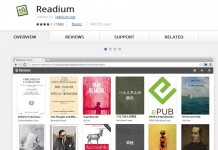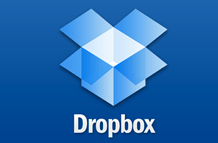 It seems that, among those who are doing the visionary thing on the ‘future’ of ebooks, two possible models are emerging. In the first model, we continue much the same as we are now: customers purchase an ebook at or near full retail price (the oft-quoted ‘paper and ink only cost about 5% of the book’s real cost’ figure comes up a lot in this dialogue) and upon purchase, customers download an ebook file which they load onto their device. Many see the permissions for this file transaction in the future—in a perfect world, they’ll do away with DRM like the music people did, and it will be sunshine and puppy dogs forever after. In a more realistic world, DRM will stay with us in some form, but it will be so transparent that most customers won’t much notice.
It seems that, among those who are doing the visionary thing on the ‘future’ of ebooks, two possible models are emerging. In the first model, we continue much the same as we are now: customers purchase an ebook at or near full retail price (the oft-quoted ‘paper and ink only cost about 5% of the book’s real cost’ figure comes up a lot in this dialogue) and upon purchase, customers download an ebook file which they load onto their device. Many see the permissions for this file transaction in the future—in a perfect world, they’ll do away with DRM like the music people did, and it will be sunshine and puppy dogs forever after. In a more realistic world, DRM will stay with us in some form, but it will be so transparent that most customers won’t much notice.
The second model (the ‘all customers are thieves and pirates’ model) has the book world getting ever more locked down. No ebook ‘loaning.’ No clipping, no text to speech, no uses not authorized by the vendor. Perhaps the books can only be accessed from the ‘cloud’ and can never be downloaded at all. Perhaps customers will pay a subscription fee, like cable television, for unlimited access—or staggered levels of fees for up to 2 books at a time, up to 4 books, or whatever. But the customer will never ‘have’ the book. They will just use it.
Most customers would probably prefer the first model. Most publishers would probably prefer the second model. But here’s why the second model won’t work, and it has nothing to do with DRM or luddites or the merits of the cloud versus not the cloud. The reason is this: IF what they’re saying is true that they can’t deliver ebooks at a price much below the current paper price, then they would be unable to price such a system in a way that would work for readers and authors.
Readers would revolt at being expected to pay full retail price for a rental. They have no problems paying a rental price for a rental, as the Netflix model has shown. But with many authors already complaining that ebooks are too cheap, I can’t see them agreeing to let the publishers give it away—however locked down the giveaway might be—for a dollar or two. And if the readers won’t do it and the authors won’t do it, where does that leave the publishers?
This is what the publishing industry needs to reconcile, and soon: you can’t have it both ways. Either you charge full price, it’s a sale, and you provide appropriate value for that sale—or it’s a rental, you charge a rental price, and there are restrictions accordingly. Go one way or the other way, there is potential on both ends. But you’ve got to choose, because a rental at full retail price just isn’t going to happen.


































The statement that ‘paper and ink only cost about 5% of the book’s real cost’ may well be true, but it is irrelevant.
Why do publishers never mention the costs of warehousing and distributing paper books, and the bricks-and-mortar bookstore cost and profit?
I seriously doubt that any of the eBook retailers get anywhere near as big a slice of the retail price of an ebook as a chain bookstore gets of the retail price of a paper book.
—-
In any event, limiting eBooks to ‘the cloud’ will simply encourage piracy, as the pirates *will* figure out how to trap a copy of any book that is sent to their ebook reading device for display.
From the coverage of the DBW here on Teleread it appears that a great number of publishers are frozen in the old ways and unable to free themselves. The industry seems to be dogged by too many administrators and too few leaders.
If the industry thinks that DRM is something or’nary folks won’t mind, then I believe they are in for a huge shock. The media, bloggers and all and sundry will ensure that they are kept well aware of the stranglehold that DRM will have on them. if the industry thinks that they can get away with this pathetic massaging of the english language between rent and lease and sell, then these people really must be some of the most incompetent industry leaders in modern history. The public is more savvy than ever before. They are more aware of their rights and of commercial realities than ever before.
If the industry does not bring in new blood at the top, and if they don’t step back from old thinking modes then I believe there will be a bloodbath among the big players.
It may take that for the market to move on to a new way of doing business, lead by indies and independent ‘producers’.
” *
Gary Young says:
January 27, 2011 at 3:15 pm
The statement that ‘paper and ink only cost about 5% of the book’s real cost’ may well be true, but it is irrelevant.
Why do publishers never mention the costs of warehousing and distributing paper books, and the bricks-and-mortar bookstore cost and profit?”
Not to mention the designers, editors and marketing professionals who make the book a beautiful product.
Well I for one have been put off investing in a e-reader because the cost of a e-book is not significantly less than an paper back
Q – how much does a publisher get into their hands from the sale of a paperback after distribution, taxes, retail margins etc. What is the normal net earning from a paperback.
renkat,
I would hope that those publishers would still be employing the editors, designers and marketing professionals when producing ebooks. A good cover, good editing, excellent formating and good marketing can turn a good book into an excellent book no matter what type of book it is; Hardback, Trade paper, paperback, or ebook.
Although I must say that ebooks should not have the cost of printing, shipping and storage added to them in any way. That should therefore be 5% less for printing, 15% less for shipping, and 7% less for storage. Amazon, B&N, and Borders will still want there cut, although it should be slightly less when they don’t need to store it somewhere either, so say 2% less for that. So the fair way to price an book should be a total of 29% less than the Hardback when it is originally released, and then should be reduced to 29% less when the paperback is then released. Of course, the publishers and book sellers will never take all of the subsequent price reductions into effect on the ebooks, so they should sell at 20 to 25 % less than a paperback book to begin with. All of this is of course my humble opinion.
There are other models: Sellers (like myself) offer ebooks at a much lower than typical retail costs, without DRM, hoping to diffuse the complaints about high pricing and DRM that often lead to piracy. It’s just a shame that such sellers aren’t getting many kudos for their efforts; Baen seems to be the only one that readers will publicly applaud, and most others are ignored or belittled.
Publishers do recognize that customers don’t expect to pay the same price for ebooks as printed books. Publishers may believe customers are wrong to think that. Unfortunately, they don’t seem to be able to make customers understand their cost of doing business, even to the extent of trying to make them understand. Part of that problem is convincing customers of the worth of some of the more byzantine and old-tech aspects of their business, coupled with the fact that they really don’t want to change those established and comfortable aspects of their business.
The publishers who wise up and accept the fact that they need to reorganize, restructure, and build a business that makes 21st century sense, will eventually be able to present a price that reflects accurate and sensible 21st century costs, and make customers understand that that’s a right, true cost. A few publishers and sellers are only now coming to grips with the fact that it’s time to restructure now… or hold on to the present structure, and wait until it strangles them out of business. Some of them are choking audibly now.
It’s beginning to look like paper backs may go the way of the dodo as well. In other words, hartdcovers new, and then remaindered. So, ebooks may not get that automatic lower price a year later. Still, once the initial burst of sales publicity is over, and the new e-book “sells through”, then more permanently lwoering the price (say another 25%) would make sense.
But who says the publishers make sense?
Most other media, and plenty of other products besides, enjoy higher initial prices for early buyers, then lower prices to bring in the later shoppers. That, too, is something that publishers may have to recognize as the way to do business in the 21st century, or go out of business.